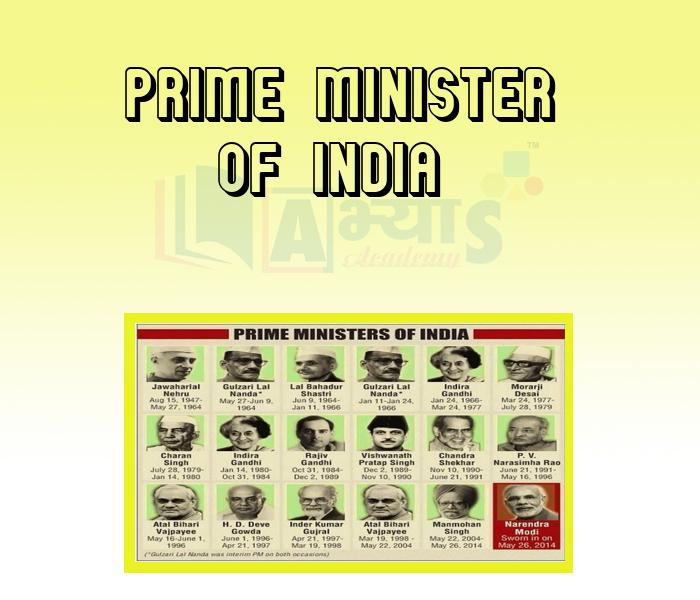Prime Minister Of India










Prime Minister Of India
The Prime Minister:
The Prime Minister of India is the chief of government, head of the Council of Ministers and the leader the majority party in parliament. The Prime Minister leads the executive branch of the Government of India.
The prime minister is the senior most minister of cabinet in the executive branch of government in a parliamentary system. The prime minister selects and can dismiss other members of the cabinet; allocates pasts to members within the Government, is the presiding member and chairman of the cabinet and is responsible for bringing proposal of legislation. The Prime Minister is appointed by the President to assist the latter in the administration of the affairs of the executive.
Origins and History:
The Prime Minister of India is, in practice, the most powerful person in the government of India. Technically he is outranked by the President of India, but because the President's duties are large ceremonial, the Prime Minister has effective responsibility for government.
Constitutional Framework And Position Of Prime Minister:
The Constitution envisages a scheme of affairs in which the President of India is the head of the executive in terms of Article 53 with office of the Prime Minister as heading the Council of Ministers to assist and advise the President in the discharge of the executive power. To quote, Article 53 and 74 provide as under;
The executive powers of the Union shall be vested in the President and shall be exercised either directly or through subordinate officers, in accordance with the Constitution.
The Prime Minister _____________________ | |||
| Right Option : C | |||
| View Explanation | |||
In which of the following article, There shall be a Council of Ministers with the Prime Minister at the head to aid and advise the President who shall, in the exercise of his functions, act in accordance with such advice is mentioned ? | |||
| Right Option : D | |||
| View Explanation | |||
Which of the following is the senior most minister of cabinet in the executive branch of government in a parliamentary system ? | |||
| Right Option : B | |||
| View Explanation | |||
Students / Parents Reviews [10]
A marvelous experience with Abhyas. I am glad to share that my ward has achieved more than enough at the Ambala ABHYAS centre. Years have passed on and more and more he has gained. May the centre flourish and develop day by day by the grace of God.

Archit Segal
7thMy experience was very good with Abhyas academy. I am studying here from 6th class and I am satisfied by its results in my life. I improved a lot here ahead of school syllabus.

Ayan Ghosh
8thOne of the best institutes to develope a child interest in studies.Provides SST and English knowledge also unlike other institutes. Teachers are co operative and friendly online tests andPPT develope practical knowledge also.

Aman Kumar Shrivastava
10thIt was a good experience with Abhyas Academy. I even faced problems in starting but slowly and steadily overcomed. Especially reasoning classes helped me a lot.

Cheshta
10thAbhyas Methodology is very good. It is based on according to student and each child manages accordingly to its properly. Methodology has improved the abilities of students to shine them in future.

Manish Kumar
10thAbout Abhyas metholodology the teachers are very nice and hardworking toward students.The Centre Head Mrs Anu Sethi is also a brilliant teacher.Abhyas has taught me how to overcome problems and has always taken my doubts and suppoeted me.

Shreya Shrivastava
8thBeing a parent, I saw my daughter improvement in her studies by seeing a good result in all day to day compititive exam TMO, NSO, IEO etc and as well as studies. I have got a fruitful result from my daughter.

Prisha Gupta
8thIt was good as the experience because as we had come here we had been improved in a such envirnment created here.Extra is taught which is beneficial for future.

Eshan Arora
8thMy experience with Abhyas is very good. I have learnt many things here like vedic maths and reasoning also. Teachers here first take our doubts and then there are assignments to verify our weak points.

Shivam Rana
7thIt has a great methodology. Students here can get analysis to their test quickly.We can learn easily through PPTs and the testing methods are good. We know that where we have to practice
